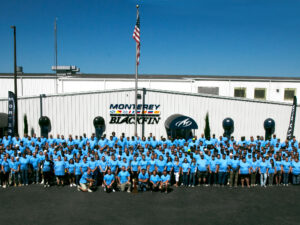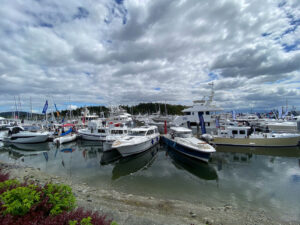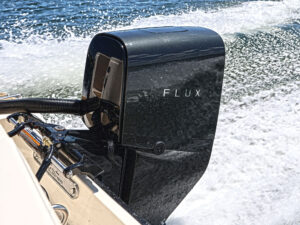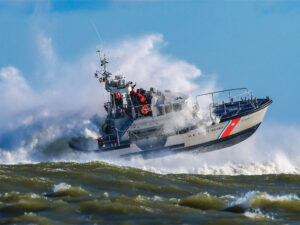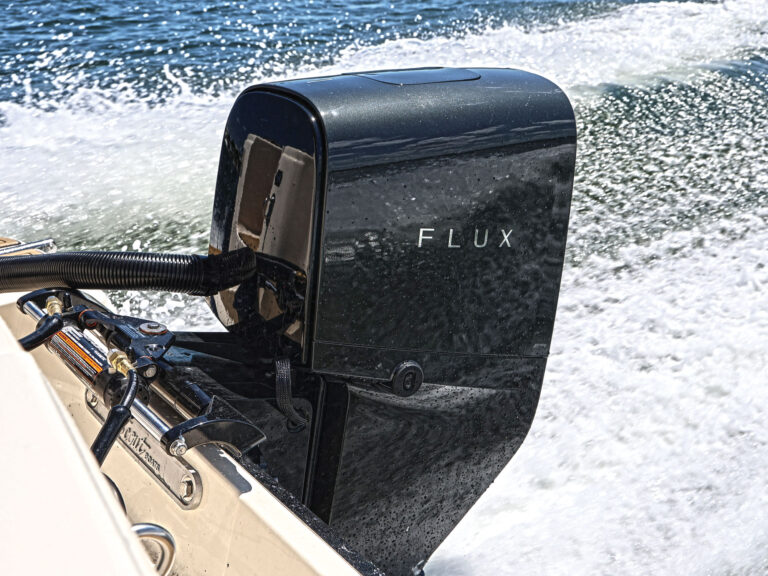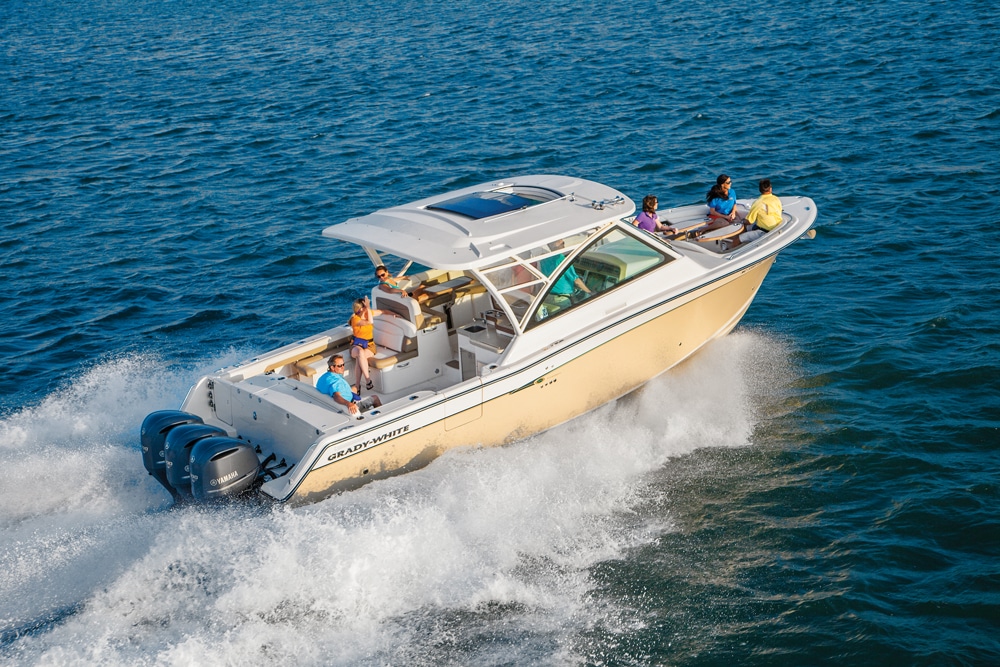
Grady-White Freedom 375
Beam: 13’2″
Draft (max): 2’5″
Displacement (approx.): 20,499 lb.
Transom Deadrise: 20.6 degrees
Max Cabin Headroom: 6’2″ port; 6’3″ starboard
Fuel Capacity: 320 gal.
Max Horsepower: 1,050
Available Power: Yamaha outboards
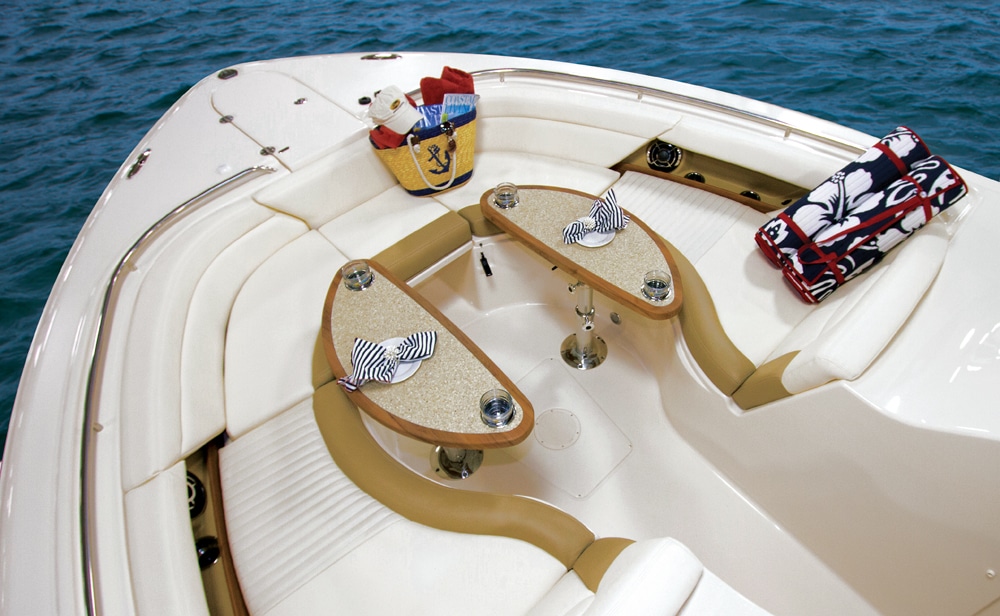
Grady-White Freedom 375
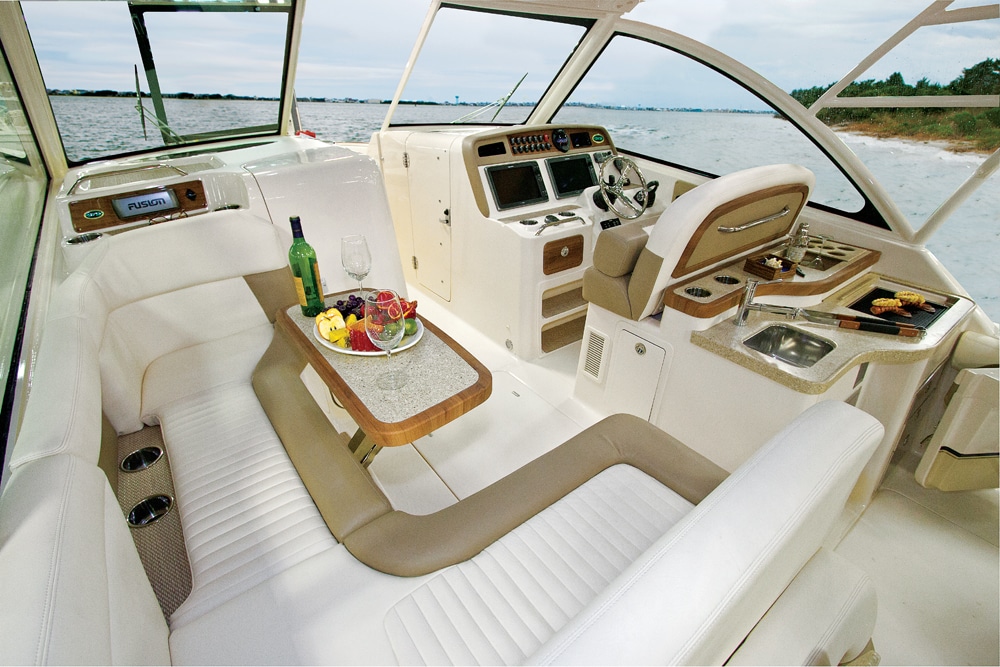
Grady-White Freedom 375
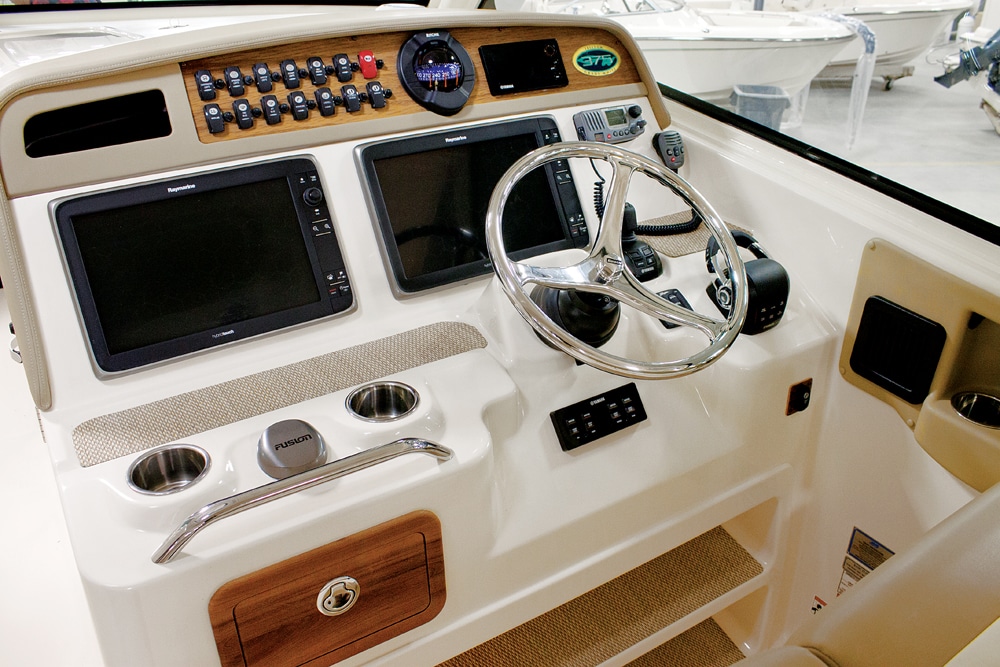
Grady-White Freedom 375
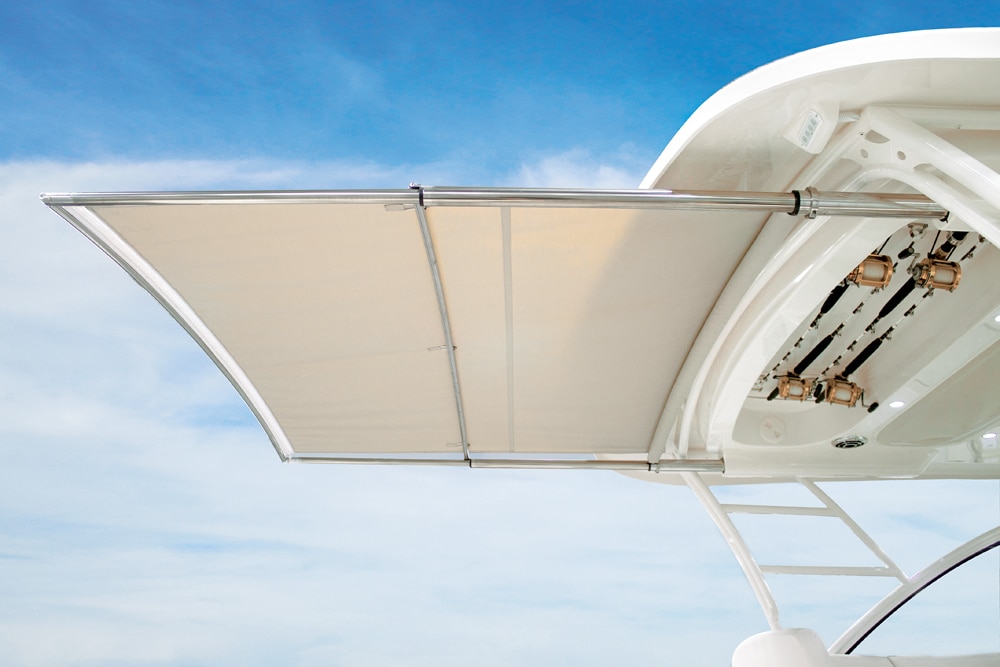
Grady-White Freedom 375
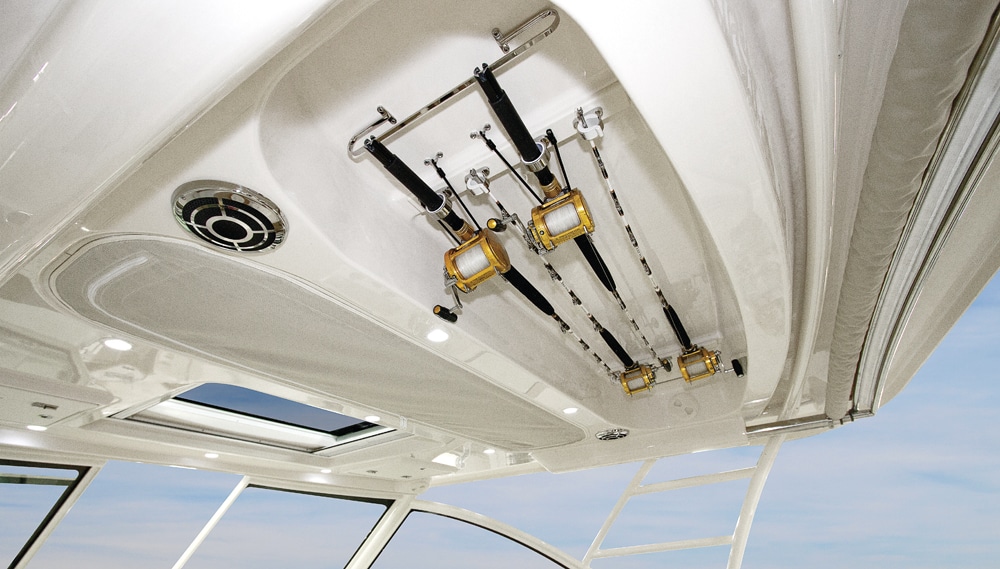
Grady-White Freedom 375
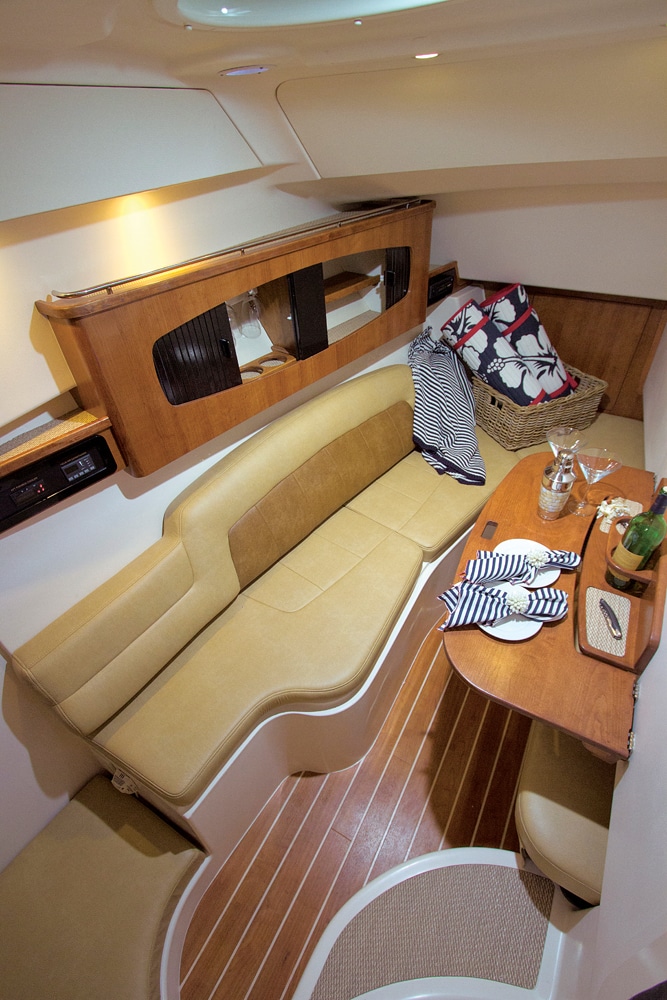
Grady-White Freedom 375
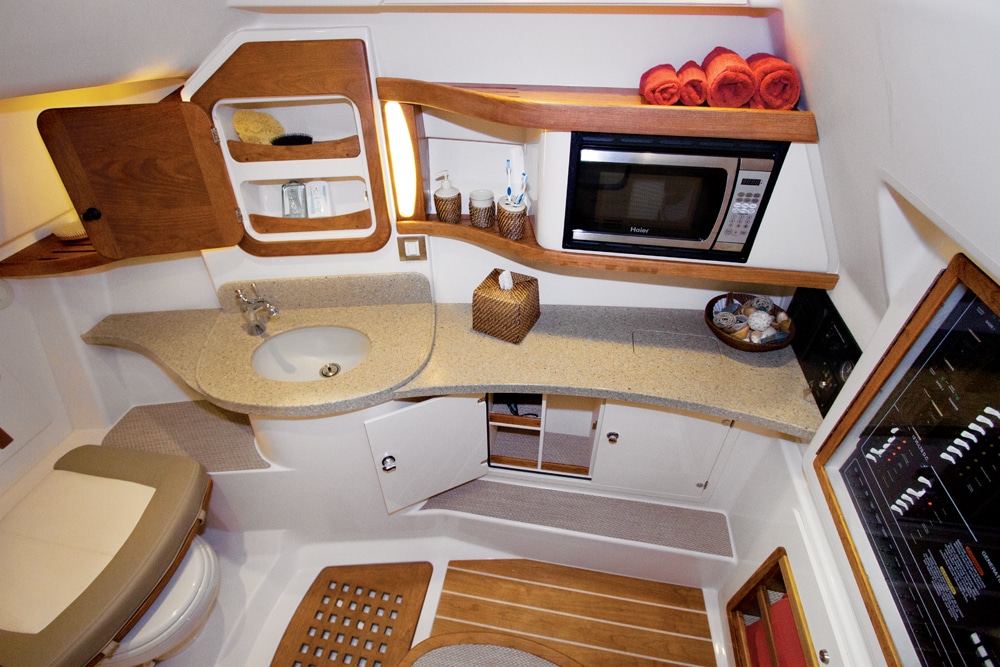
Grady-White Freedom 375
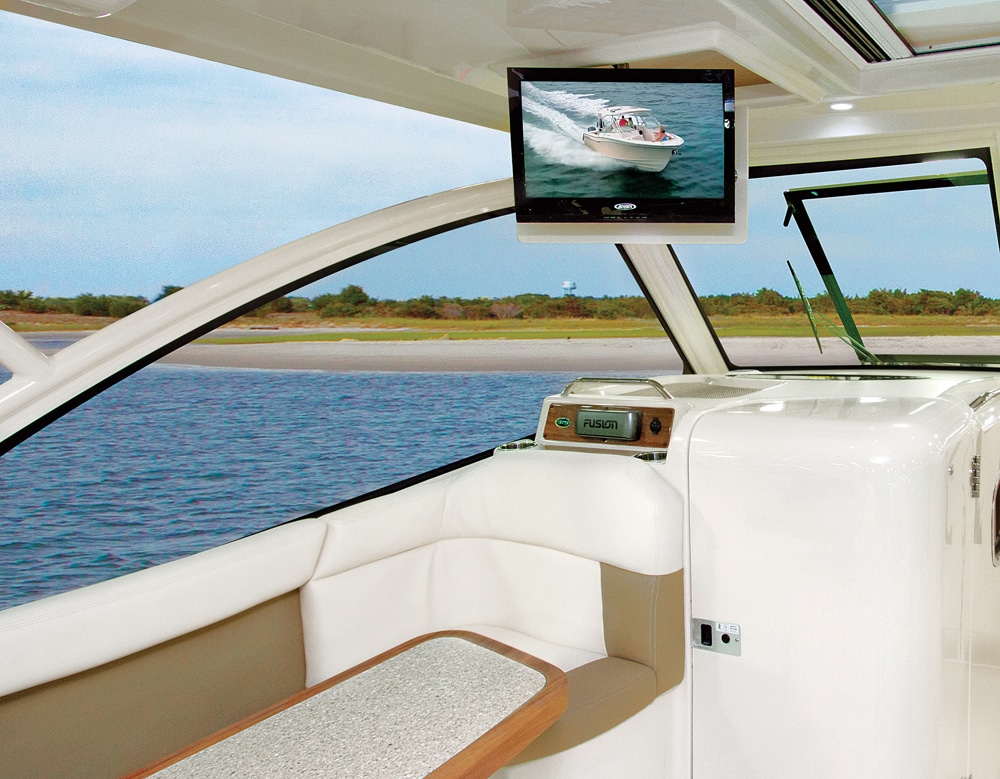
Grady-White Freedom 375
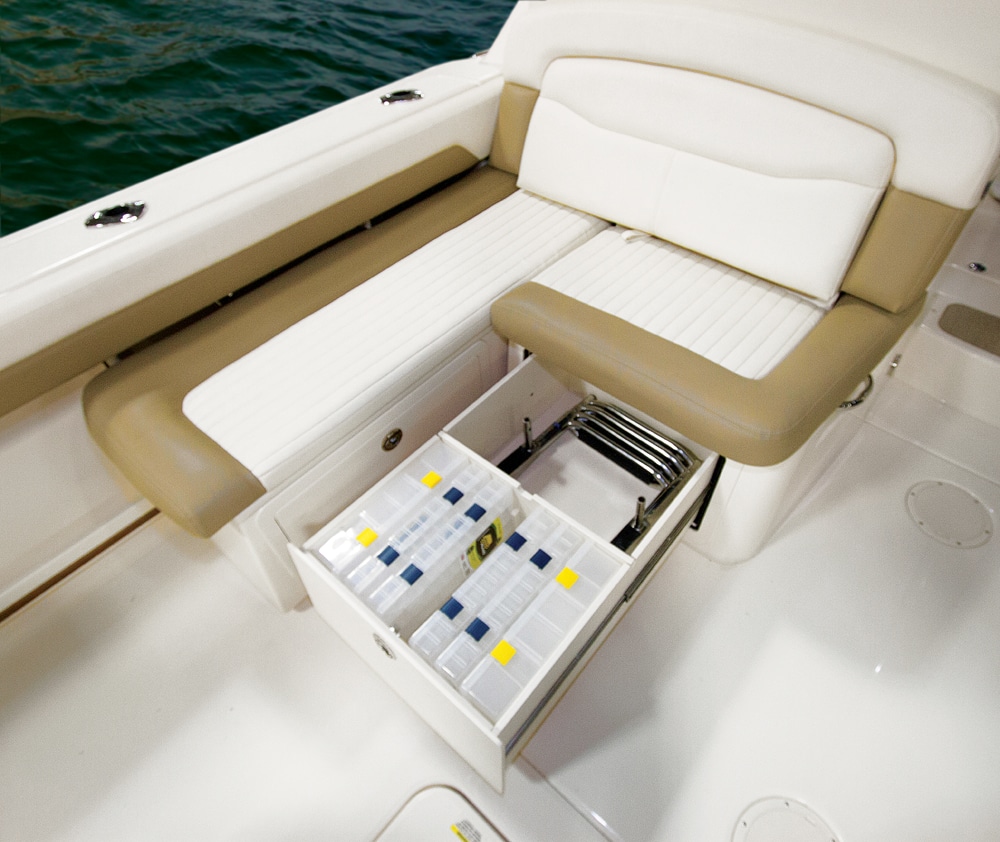
Grady-White Freedom 375
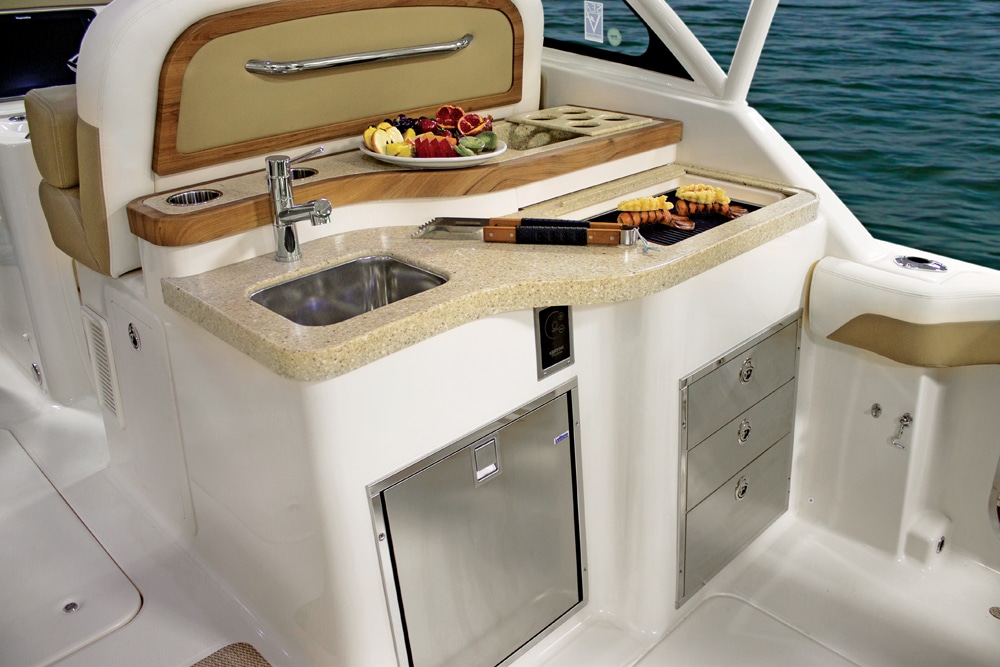
Grady-White Freedom 375
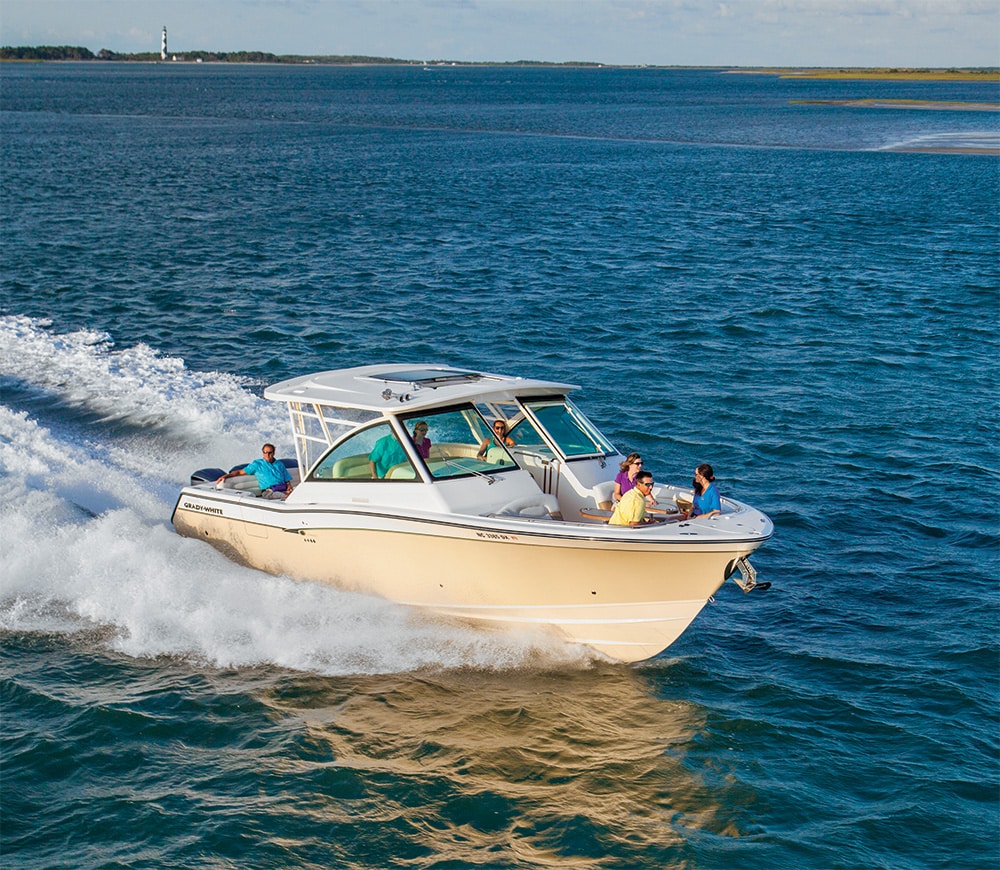
Grady-White Freedom 375
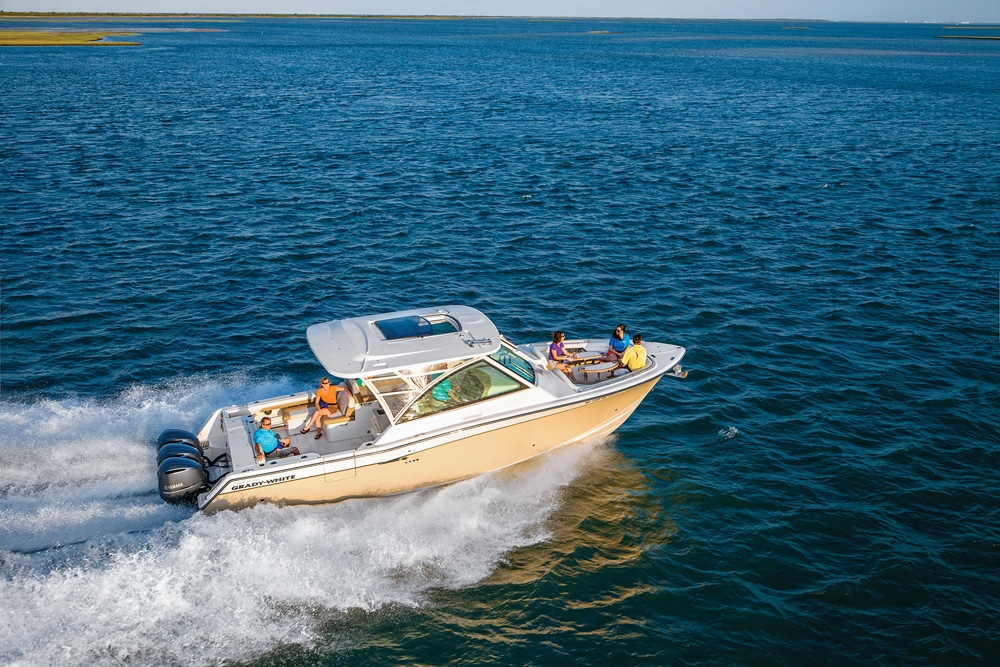
Grady-White Freedom 375
When 8 a.m. rolled around, I stepped up to Grady-White’s Freedom 375 and the smell and sound of sizzling sausage met me. The morning started with breakfast on board. I slipped the moorings and dashed back aboard via the transom door. I could’ve jumped in on the starboard gunwale dive door also. Both doors are mounted on burly, overbuilt hardware made by Grady-White in-house. With the Yamaha Helm Master joystick system we maneuvered the Freedom 375 out of the slip, twisting the ’stick clockwise and executing a 90-degree turn in place — as crisp as a military-parade maneuver.
At the inlet, manning the tilting wheel, I compared the vista ahead to the Raymarine display. David Neese, Grady-White’s vice president of engineering, suggested the Beaufort Bight lighthouse as a first stop, so I eased back the throttle a bit to find its sweet spot for economy — about 30 mph at 3,900 rpm, making nearly 1 mile per gallon — and trimmed down some.
With 5 miles to go, I throttled up to 6,000 rpm and found the boat humming along at 48 mph burning 78 gallons per hour. We circled the cove inside the bight and headed offshore. I snapped the helm to port for a 180, and the 375 came around sweetly. It rolled gently into that turn and returned to a straight course when I centered the helm. The Freedom’s variable-degree deadrise hull (20 degrees at the transom) gave a velvet ride in the wind chop and plenty of comfort as we cleaved wakes. At low speeds its roll moment was long, delivering maximum comfort for trolling or bottomfishing.
Back inside, we eased into Taylor Creek, bordered on one bank by a bustling waterfront and on the other by a desolate barrier island inhabited by wild horses. The creek narrowed considerably, so with a full twist of the joystick, I was able to pivot the boat smoothly and steer it back to port.
Outboards are typically shallower in draft than inboards are, and that is one of the advantages of the Freedom 375. To get comparable shallow-water access you’d have to switch up to a jet-drive boat. Interestingly, Grady-White reports some customers have compared the Freedom to the Hinckley T34 — a jet-powered lobster-style boat.
For fishing, the big dual console can be easily equipped for wetting a line, with an optional 30-gallon livewell. A vertical venturi system feeds a top-to-bottom “envelope” of moving water, flowing around the well and leaving no un-oxygenated eddies to trap and kill bait. Next to the livewell, a refrigerated icebox, frosty cold, stores rigged trolling baits.
Rod holders under the gunwales offer plentiful storage, and instead of “afterthought” bolt-on toe rails, Grady-White engineered them into the acrylic coaming trim panels: handsome and useful. Also enhancing the boat’s panache is maintenance-free faux-teak trim. The material is touted to be as impervious to water as plastic but you’d swear it was teak.
Tackle stowage abounds. Drawers pull out of the mezzanine seating. Tug slightly on the seat back, and out rolls a Corian-topped workstation with two more compartments. If you’re rigging to fish, there’s more stowage at the galley station.
The test-boat cockpit was equipped with a removable L-shaped lounge. If you plan on hard-core fishing, leave it ashore. You can also remove it for easier access to the genset and plumbing equipment in the bilge.
Grady-White maintains an award-winning level of quality boatbuilding. Its construction trademarks include an unsinkable hull with foam added for flotation — but not for structure. The Freedom 375’s finish looks rich.
Careful attention is paid to component quality and installation. While some builders foam-in the fuel tanks, potentially trapping moisture around them that might cause corrosion and leaks, Grady maintains dead air space around the tank, supporting it on solid spacers, and keeps the area dry with drain holes. The company’s gelcoat is one of the glossiest and toughest available.
Next, check the accommodations belowdecks. Inside the port console I found a double berth that converts from a cozy couch at the touch of a button. Aft of that is a third berth. The head lies in the starboard console and is full-featured with a roomy shower, plenty of light, ventilation, stowage and easy access to the power panel.
The 375 is the largest dual console on the water, so drawing comparisons with competitors is tricky. A luxury sport center-console like Contender’s 39 LS ($391,707 base, powered like our tester) might bear a different layout, but the boat’s hard fishing focus is softened and it’s apt to be used for both recreation and fishing. Both bear the gunwale dive door. Contender offers a sharper deadrise which it’d say offers a softer ride; both boats have below-deck berths and a head, though the Contender’s is considerably less roomy.
The Freedom 375 might look like a fishy dual console topside, but it’s a full-featured cruiser for anyone eager to enjoy the sounds of the surf while swinging on the hook.
Comparable model: Contender 39 LS
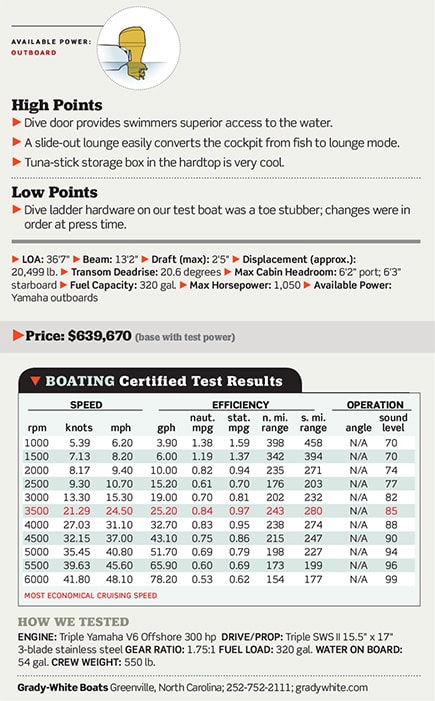
Grady-White Boats – Greenville, North Carolina; 252-752-2111; gradywhite.com

